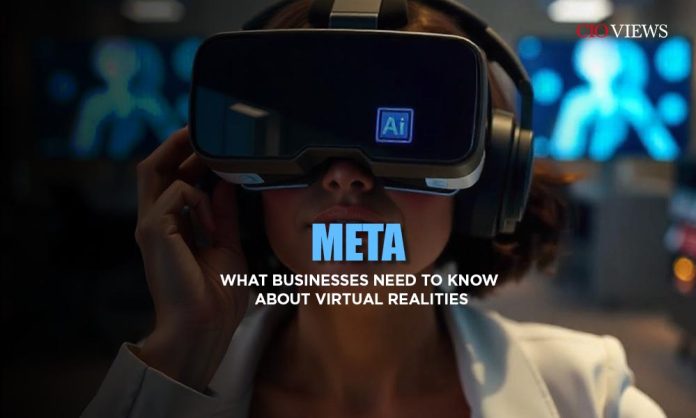Virtual Reality (VR) is more than just a science fiction concept. It has quickly evolved into a powerful tool for businesses to improve customer experiences, streamline operations, and drive innovation. As Meta (formerly Facebook) expands its virtual presence, businesses must understand how to capitalize on this technology.
Understanding Virtual Reality in Business
1. What is Virtual Reality?
- VR is an immersive technology that creates a simulated environment, offering users a 360-degree experience.
- Users can interact with this environment in a way that feels real, thanks to VR headsets and devices.
2. Why Should Businesses Care About VR?
- Enhanced Customer Experience: VR offers a unique way to engage customers, providing them with immersive and interactive experiences.
- Competitive Advantage: Early adopters of VR can differentiate themselves in crowded markets.
- Innovation and Creativity: VR opens up new avenues for creativity, allowing businesses to innovate in product design, marketing, and customer service.
Applications of VR in Various Industries
1. Retail and E-commerce
- Virtual Showrooms: Customers can explore products in a virtual space before making a purchase.
- Interactive Product Demos: VR allows customers to interact with products, enhancing their understanding and increasing conversion rates.
2. Real Estate
- Virtual Property Tours: Prospective buyers can explore properties remotely, saving time and resources.
- Architectural Visualization: Builders and architects can use VR to present their designs to clients in a more engaging way.
3. Healthcare
- Training and Simulation: VR provides a safe environment for medical professionals to practice procedures.
- Patient Therapy: VR is used for pain management, physical therapy, and mental health treatments.
4. Education and Training
- Immersive Learning Experiences: VR offers students and employees interactive learning environments.
- Remote Training: VR allows businesses to train employees regardless of their location.
5. Marketing and Advertising
- VR Ads: Brands can create immersive ads that engage consumers on a deeper level.
- Virtual Events: Companies can host virtual events and trade shows, reaching a global audience without physical constraints.
Benefits of Integrating VR into Your Business Strategy
1. Increased Engagement
- VR captivates users’ attention, leading to longer interactions and higher engagement rates.
2. Cost Savings
- Virtual prototypes and simulations can reduce the costs associated with physical testing and development.
3. Global Reach
- VR breaks down geographical barriers, allowing businesses to reach and interact with a global audience.
4. Data Collection
- VR provides valuable insights into customer behavior and preferences through interactive analytics.
Also Read – Journey of Development Bank Ghana
Challenges and Considerations
1. High Initial Investment
- The cost of VR technology can be a barrier for some businesses. However, the long-term benefits often outweigh the initial expenses.
2. Technical Expertise
- Implementing VR requires specialized knowledge and skills, which may necessitate additional training or hiring.
3. Content Creation
- Creating high-quality VR content can be time-consuming and requires significant resources.
Also Read – Ken Lu and the Evolution of Winmate INC
As Meta continues to push the boundaries of virtual realities, businesses have a unique opportunity to leverage this technology for growth and innovation. By understanding the potential applications and benefits of VR, companies can stay ahead of the curve and create memorable experiences for their customers.





